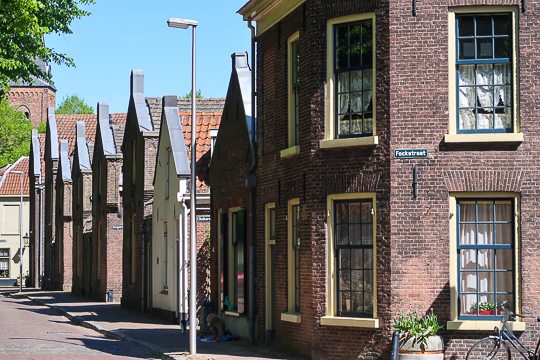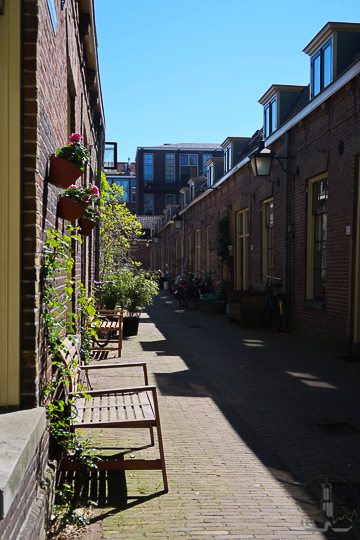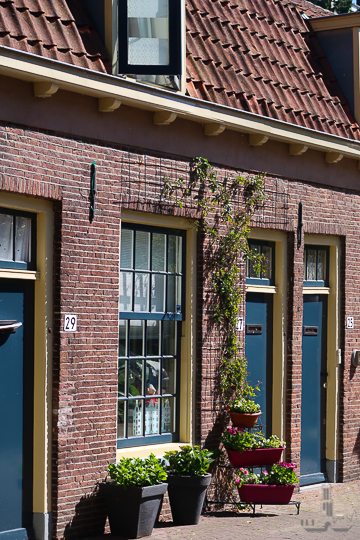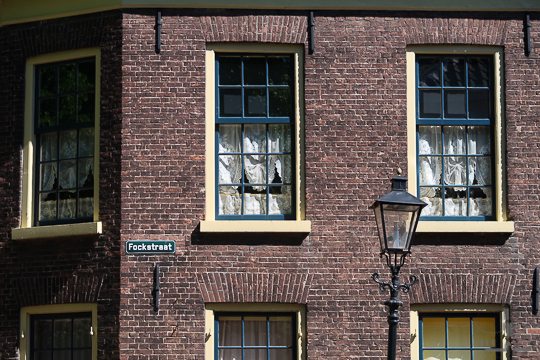Welcome to the new series of Explore Utrecht mini tours! This year again, we’re bringing you on a discovery trip of our city through picture and word. Can you also follow the #exploreutrecht mini tours this year? Then follows us on Facebook en Instagram for more information on starting locations and theme topics.
The Seven Alleys
‘… the Sterrenwijk, the Houtplein and the Lange Rozendaal, Utrecht is the most beautiful of all!’
(Herman Berkien – Utereg m’n stadsie)
It isn’t for nothing that the Lange Rozendaal features in the most famous ode to Utrecht. The Lange Rozendaal isn’t just one of the most characteristic streets in the city; it’s also synonymous with the neighborhood where it’s located: the Zeven Steegjes (Seven Alleys). I personally find it to be a wonderful example of 19th century architecture on the eve of the Industrial Revolution.
Catholics and Socialists
The seven alleys are about 11 passages, alleys, and streets in the south east of the city center, built in 1842 and 1860 by the Roman Catholic Parochial Council. In 1761, they got the piece of land behind the centuries-old beer brewery De Boog, and they decided to build simple workers’ houses there. At the core are Kockstraat, Brouwersstraat, Boogstraat, and Moutstraat. In 1859, the socialist Society for the Improvement of Homes for Workers built the little houses around the Korte Rozendaal. There was also talk of a Catholic- and socialist-run part.
Ahead of Their Time
The houses were meant for big Roman Catholic families. They were either dependent on charity, or the man of the house worked as a factory worker or porter on the Oudegracht. The houses were well ahead of their time: cheap, but made out of brick, and with a second floor and a loft. (In the 19th century, the vision of public housing changed. The population growth in the cities and the persistent fear of contagious diseases like cholera led the government to implement a new housing policy. From now on, streets had to be accessible from two sides, and they had to be broad. Houses had to be bigger, sturdier, and drier. There had to be separate kitchens, toilets, and living- and bedrooms. There was even talk of water pipes and sewage. The Seven Alleys were adapted to these standards as well as they could be; the petroleum sets were replaced by gas cookers, and the communal toilets at the start of the street were replaced by toilets in the houses. However, a backlog remained.
Demolition
The municipality acquired the houses in 1952, and in the 70s they were renovated slightly. Since then, the municipality has regularly proposed a plan to demolish the neighborhood, but the residents have fought against this. They’ve even formed a commission to communicate with the municipality. In the 90s, the neighborhood was restored under their cooperation. It was then that they finally got a shower in their houses and a built-in kitchen.
Preservation of Character
Fortunately, this restoration didn’t take away from the alleys’ cultural individuality: on a nice day, the people still sit outside on benches in front of their doors playing cards, drinking, and chatting. Every year, there’s a neighborhood party on August 29th, 30th, and 31st, with a parade and games for the children. I think they’ve done a good job of preserving the Seven Alleys’ character as much as possible. Although there are quite a few people living there from outside the city, it’s still one of the most famous Utrecht working-class neighborhoods. If you haven’t checked it out yet, walk along the Oudegracht or Pelmolenweg again. There’s so much to discover!






